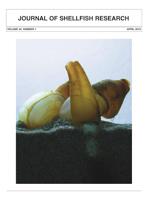Intertidal aquaculture for geoducks (Panopea generosa Gould, 1850) is expanding in southern Puget Sound, Washington, where gently sloping sandy beaches are used for field culture. Geoduck aquaculture contributes significantly to the regional economy, but has become controversial because of a range of unresolved questions involving potential biological impacts on marine ecosystems. From 2008 through 2012, the authors used a “before-after-control-impact” experimental design, emphasizing spatial scales comparable with those used by geoduck culturists to evaluate the effects of harvesting market-ready geoducks on associated benthic infaunal communities. Infauna were sampled at three different study locations in southern Puget Sound at monthly intervals before, during, and after harvests of clams, and along extralimital transects extending away from the edges of cultured plots to assess the effects of harvest activities in adjacent uncultured habitat. Using multivariate statistical approaches, strong seasonal and spatial signals in patterns of abundance were found, but there was scant evidence of effects on the community structure associated with geoduck harvest disturbances within cultured plots. Likewise, no indications of significant “spillover” effects of harvest on uncultured habitat adjacent to cultured plots were noted. Complementary univariate approaches revealed little evidence of harvest effects on infaunal biodiversity and indications of modest effects on populations of individual infaunal taxa. Of 10 common taxa analyzed, only three showed evidence of reduced densities, although minor, after harvests whereas the remaining seven taxa indicated either neutral responses to harvest disturbances or increased abundance either during or in the months after harvest events. It is suggested that a relatively active natural disturbance regime, including both small-scale and large-scale events that occur with comparable intensity but more frequently than geoduck harvest events in cultured plots, has facilitated assemblage-level infaunal resistance and resilience to harvest disturbances.
How to translate text using browser tools
1 March 2015
Ecological Effects of the Harvest Phase Of Geoduck (Panopea generosa Gould, 1850) Aquaculture on Infaunal Communities in Southern Puget Sound, Washington
Glenn R. Vanblaricom,
Jennifer L. Eccles,
Julian D. Olden,
P. Sean Mcdonald
ACCESS THE FULL ARTICLE

Journal of Shellfish Research
Vol. 34 • No. 1
March 2015
Vol. 34 • No. 1
March 2015




